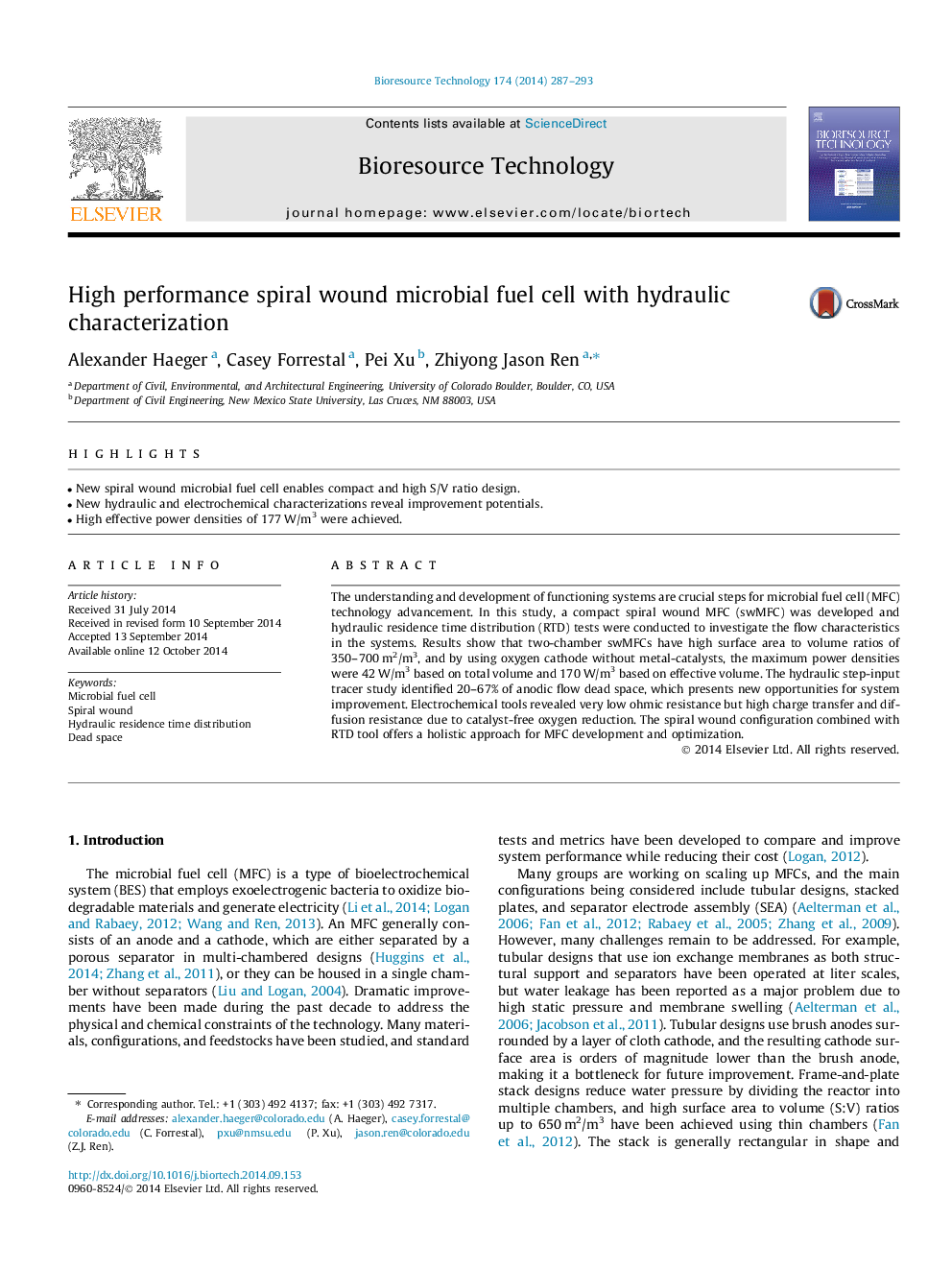| Article ID | Journal | Published Year | Pages | File Type |
|---|---|---|---|---|
| 7075895 | Bioresource Technology | 2014 | 7 Pages |
Abstract
The understanding and development of functioning systems are crucial steps for microbial fuel cell (MFC) technology advancement. In this study, a compact spiral wound MFC (swMFC) was developed and hydraulic residence time distribution (RTD) tests were conducted to investigate the flow characteristics in the systems. Results show that two-chamber swMFCs have high surface area to volume ratios of 350-700Â m2/m3, and by using oxygen cathode without metal-catalysts, the maximum power densities were 42Â W/m3 based on total volume and 170Â W/m3 based on effective volume. The hydraulic step-input tracer study identified 20-67% of anodic flow dead space, which presents new opportunities for system improvement. Electrochemical tools revealed very low ohmic resistance but high charge transfer and diffusion resistance due to catalyst-free oxygen reduction. The spiral wound configuration combined with RTD tool offers a holistic approach for MFC development and optimization.
Related Topics
Physical Sciences and Engineering
Chemical Engineering
Process Chemistry and Technology
Authors
Alexander Haeger, Casey Forrestal, Pei Xu, Zhiyong Jason Ren,
